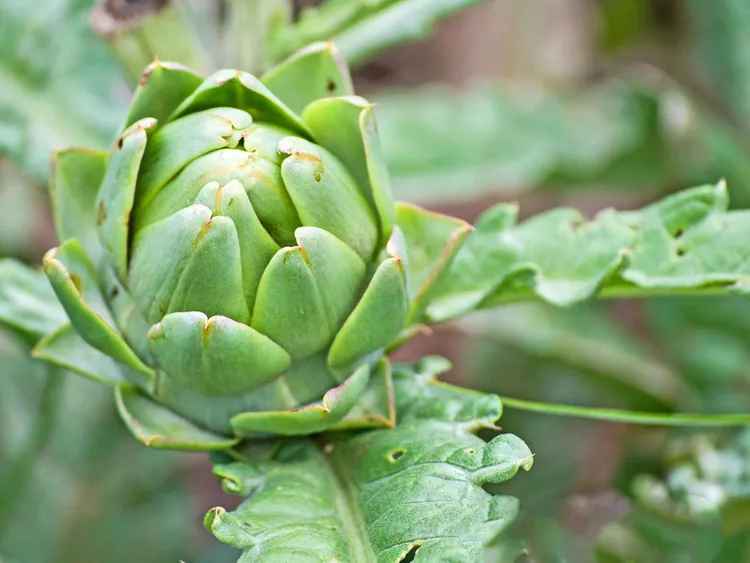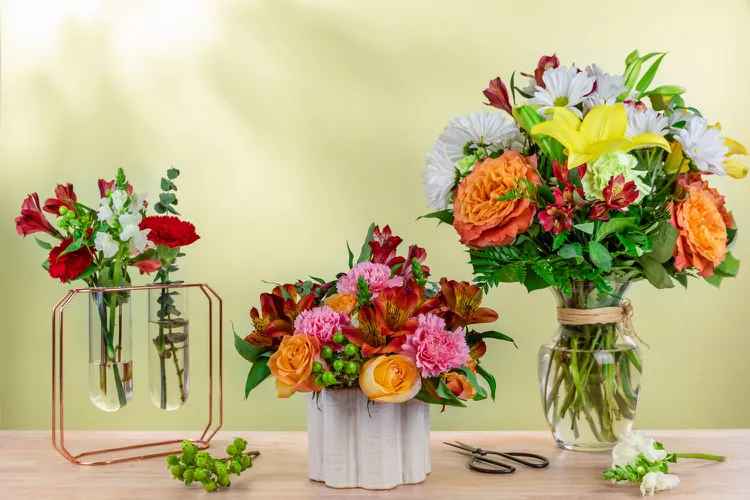The Abelia genus is composed of 30 deciduous shrubs and evergreen shrubs. Modern DNA testing has revealed that previously recognized Abelia members were significantly different. This has caused much debate about the Abelia Genus. Diverse horticultural specialists recognize different nomenclature structure, either reducing or reclassifying species as Linnea members1.
There are several ways to identify shrubs that are commonly called abelia. These shrubs have pointed, oval leaves, which are usually yellow or green, with details of pink, orange or bronze. Some of these shrubs are variegated or multicolored and change colors with the changing seasons. The tubular flowers can be white, yellow, or pink. Abelia shrubs bloom from spring to fall, unlike many other flowering plants.
Common Name Abelia
Abelia
FamilyCaprifoliaceae
Plant TypeShrub
Mature Size2-10 ft. tall, 2-8 ft. wide
Sun ExposureFull, Partial
Soil type Loamy and moist but well-drained
Soil pHAcidic, Neutral
Bloom Time Spring Summer Fall
Flower Color Yellow, Pink, White
Hardiness Zones 4-11 in the USA
Native Area Asia
Abelia Care
Abelia plants require little care once they are established. They reward gardeners with an abundance color and visual appeal with their colorful leaves and long blooming period. Their colorful foliage changes color throughout the growing period and their long-lasting blooms attract pollinators such as hummingbirds and butterflies. Powder mildew and anthracnose can cause problems, but these plants are not usually affected by pests or diseases.
Plant these shrubs early in spring or fall, when temperatures are mild. Select a location with lots of sunlight and well-draining, rich soil. Plant the abelia into a hole twice as large as the root structure. The top of the roots should be just above the soil.
Abelia bush with pink flowers and thick leaves in sunlight
Pink buds and white tubular flowering Abelia shrub branch
Closeup of pink tubular flowers on pink branch of Abelia shrub.
Closeup of an Abelia shrub branch with pink tubular flowers and small pointed leaves.
Abelia shrub branches with pink tubular flower and small oval leaves
Light
Abelia will grow in full sun or partial shade. Planting them in full sun will promote vibrant colors on the foliage and healthy blooms. Some afternoon shade will be beneficial for plants that are grown in hotter areas.
Soil
Abelias tolerate a wide range of soil conditions. They thrive in moist, fertile soil that drains well. It is best to amend the soil before planting, since these plants thrive in soils that are rich in organic material. For optimal growth, soil pH levels should be slightly alkaline.
Water
Once established, these plants are drought-tolerant. They do best with regular watering. Water abelias at least twice a week, especially during the summer heat. This will keep them healthy and vibrant. Let the soil dry out before you water it again. Abelias benefit from deep, infrequent watering.
Temperature and Humidity
Abelia can be grown in many climates, ranging from USDA hardiness zone 4 to 11. The specific requirements of each variety will determine the preferred growing zone.
Fertilizer
Abelia shrubs thrive in soils rich in organic material. Compost can be added yearly to the soil to help with drainage and provide nutrients. In the spring, abelias will grow faster if you give them a slow release shrub fertilizer.
Abelia Types
Glossy Abelia, Abelia xgrandiflora: This variety is popular and can be grown anywhere from cold to hot climates. In colder climates, its glossy foliage provides semi-evergreen leaves while in warmer climates it produces evergreen foliage.
Abelia ‘Kaleidoscope:’ This popular dwarf variety has vibrant leaves that change color according to the season. The variegated leaves of this Abelia appear yellow in the spring and then turn a vibrant orange-red color in the fall. When in bloom, the foliage is complemented with small white flowers.
Abelia x chinensis – ‘Rose Creek Abelia’: This variety is known as a unique color combination. The glossy leaves turn bronze in autumn, and the flowers change from pink-white. The deep red branches complement these color changes.
Pruning
Abelia shrubs will look clean and grow strong with occasional pruning. To avoid cutting off flower buds or new growth, it is best to prune late winter or in early spring. Trim the plant into your desired shape by removing any dead or damaged branches. You should only remove about a third of the shrub. Certain varieties have long, thin stems that grow from the trunk and branches. These can be cut off to give a more streamlined appearance. Some varieties flower on old wood. It is best to prune them after they have flowered.
Propagating Abelia
Both hardwood and softwood cuttings can be used to propagate abelia. Hardwood cuttings, though often more durable than softwoods, do not root as well as softwoods. Hardwood cuttings should be taken in fall, while softwood cuttings can be taken in spring. Both plants are treated the same. You will need a small pot with rich, well-draining soil and rooting hormone to grow either of the options. Follow these steps to get started:
Cut a branch of around 6 inches using sharp scissors. Cut below the node.
Remove all lower leaves.
Plant the root hormone-treated end gently into a rich, well-draining soil.
Place the pot in an area that is warm and sunny. Keep the soil moist.
In one to two weeks, roots should begin to form.
How to Grow Abelia from Seed
Abelia can be grown from seed, but you should know that the plants produced by collected seeds are different from their parent plants. Some varieties of abelias, like the glossy variety, are sterile, and don’t produce any seeds. Cuttings are required to get an exact copy of the parent. Growing abelia from seed is rewarding if you don’t mind a slightly different plant, whether it be in terms of color, scent or blooms. If you want to grow them indoors, you will need a bright, sunny spot, rich, moist soil and small pots. Follow these instructions to grow them indoors:
Fill small pots rich, moist and draining soil.
Plant a few seedlings in each pot by gently pressing the seeds into the soil.
Keep the soil moist and place the pots near a warm, sunny location.
In a few weeks, you should see germination.
Harden off the seedlings outside once they reach a height of several inches.
Follow these instructions to start abelia outdoors:
Select a sunny spot in your garden. In the spring, when frost has passed, scatter the seeds over rich, moist and well-draining ground. Depending on the soil, it may be better to amend with compost before you plant.
Regularly water the soil to keep it moist.
In a few weeks, you should see germination.
Potting and Repotting Abelia
Some abelias grow quite tall, while others remain compact. Plants with small varieties such as dwarfs are perfect for container gardens. Before planting abelia, choose a pot that has drainage holes. Choose a pot large enough to allow the plant to grow comfortably for several years before it needs to be replanted. For this, choose a pot that is 8 inches larger than the plant’s root system. Add plenty of soil rich in compost, keep the soil moist and place it in a sunny spot. If the plant grows too large for its container, tap the pot and tip the plant over on its side to loosen its roots. Slide the roots out of the pot, and then plant them in a pot with a few extra inches on all sides. Fill the pot with soil rich in nutrients and thoroughly water it.
Overwintering
Abelias that are grown in the right zones will not need extra care. Container-grown plants may require extra protection against the elements in cold climates. They should be moved into a protected place, such as an indoor or greenhouse.
How to get Abelia to bloom
The tubular flowers of abelia shrubs last from spring until autumn. The small, four- or five-petalled flowers measure a few inches in length. These flowers are white, yellow or pink and attract pollinators like butterflies and hummingbirds. They emit a pleasant scent.
These shrubs usually bloom without any problems. To encourage healthy flowering, make sure that the soil drains properly and the plant gets plenty of sunlight. Pruning too much can inhibit flower production.
Common Abelia Problems
Abelias are known for their easy care and problem-free gardening. Even though these plants are low-maintenance, they can occasionally cause problems.
No flowers and thick foliage
Abelias are often able to bloom on their own. If you notice that your abelia has healthy, thick foliage but no blooms during bloom, it could be because of the fertilizer you use. Too much nitrogen in fertilizer encourages the growth of foliage rather than flowers. Change to a fertiliser with a higher phosphorus, nitrogen and potassium ratio.
Yellowing leaves and a Sickly Appearance
It is usually caused by a soggy soil that does not drain well. The root rot could be to blame. If you suspect root rot, dig the plant gently up and remove any infected branches or roots. Replant the abelia in the amended soil, which should be well-draining. Use sand or compost to improve drainage. Let the soil dry before you water it again.
The FAQ
Are abelia shrubs evergreen?
The type of shrub you are growing and the conditions in which it grows will determine the answer. Some Abelia species have deciduous leaves while others have evergreen ones. In colder climates, Abelia shrubs shed their leaves during the winter. In warmer climates, they keep their foliage all year.
How big do abelia shrubs get?
Each variety has a different mature size. The sizes range from 2 to 10 foot tall and 2-8 feet wide. This allows you to customize your landscape to meet your specific needs.
What is the best way to prune Abelia shrubs?
Plants of the Abelia genus do not need to be pruned every year, but they can benefit from it. This is best done in late winter or early Spring. This will keep the plant neat and clean.





